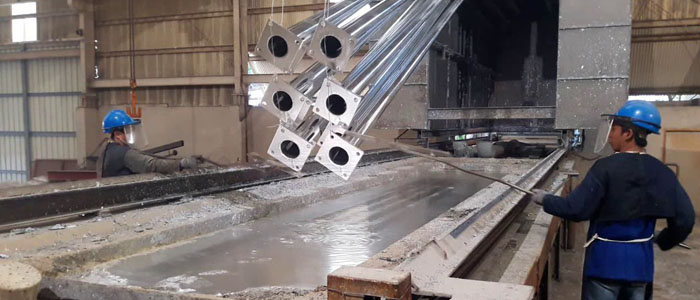Zincanneal refers to sheet steel with a unique coating of the zinc-iron alloy. It is a result of a continuous hot dip process. Zincanneal steel is normally used in the making of non-exposed vehicle panels, washing machines, switchboards, door panels, commercial refrigerators among other applications.
Zincanneal products are characterized by a matte grey coating, with a spangle free surface that is perfect for post-painting. Moreover, they offer great bending and roll-forming that is geared to give you an easier time during fabrication, and impressive results thereafter.
This article explores how Zincanneal, sometimes referred to as galvannealed steel, is created. You’ll also get to learn about some of the benefits of this attractive matte-finished steel sheet.
The Process of Producing Zincanneal or Galvannealed Steel
Zincanneal is formed by modifying galvanized steel through a post galvanizing heat treatment, which transforms the protective coating into a zinc/iron alloy. The result is a spangle-free, smooth grey surface. The process starts with hot-dip galvanization, where the steel sheet is passed through a galvanizing zinc bath.
After the steel sheet has been submerged in a zinc bath, it is taken through the air knives where removal of excess zinc is done. The air knives basically refer to devices that blow off debris or liquid from the products passing on conveyors.
In the hot dip process, the air knives remove any impurity and excess zinc to perfect the bonding of three metals – steel, zinc, and iron. After passing through the air knives, the sheet steel is heated in the annealing furnace for at least a minute. This causes the zinc and iron layers to diffuse and bond into each other.
However, the annealing must be done when the stripes are still very hot from the galvanizing step. That means the zinc is still in liquid form during the annealing process. Now, the galvanizing bath contains 0.1 percent aluminum added to induce a powerful bonding between zinc and iron.
The Annealing Process
Annealing process requires temperatures of 500 to 565 degrees Celsius. This is possible because most of those processes nowadays are done in induction furnaces as opposed to the traditional annealing lines, which used gas fired heating.
After the annealing process, three distinctive layers are identified, and they are:
- Gamma
- Zeta
- Delta
These three layers are characterized by varying chemical formulas in terms of iron and zinc quantities.
In addition, the process results in between 9 to 12 percent of the iron bulk content. The resulting aluminum is between 1 to 4 percent. However, these compositions may vary depending on the heating temperature and time.
The results of the annealing process are a matte appearance finish. It is hard and brittle, but further working by bending or pressing may cause the coating to degrade. Nonetheless, it offers better spot weldability and allows paint to adhere well more when compared to the galvanized zinc coating.
It is also worth noting that the iron present from the alloy phase makes the Zincanneal vulnerable to corrosion in moist environments. It develops a tarnishing which is red in color. The good thing it that repainting is easy with zinc phosphate coating.
The Advantages of Using Zincanneal
The galvannealed steel or zinc anneals feature unique properties than the galvanized steel. It can assume a super smooth finish upon being temper rolled. This makes it a great choice where surfacing specifics are crucial.
However, the galvannealed steel is resistant to corrosion with minimum yield strength. Besides, these surfaces boast improved capabilities on spot welding, formability, and impressive painting abilities.
Moreover, the Zincanneal is not as susceptible to rust as the galvanized steel. Also, better welds are achieved with zinc alloy coating. In fact, the welding performance is similar to the cold rolled steel. Due to these benefits, the galvannealed steel has a hot demand in automotive and appliance industries.
Bottom Line
When done properly, galvanized steel is the ideal option in countless applications. Moreover, once it has gone an extra process of annealing, the steel metal can be beneficial in a variety of applications. Besides, the zinc anneals feature an attractive matte finish and can work well with various types of paints.
Due to its excellent paint adhesiveness and weldability, Zincanneal steel is considered the best for architectural application. Galvanized steel, on the other hand, largely features a zinc coating, which results in a full spangled finish after a hot dip process. So, galvanized is less appropriate for welding, forming and painting, and you are better off with Zincanneal.

